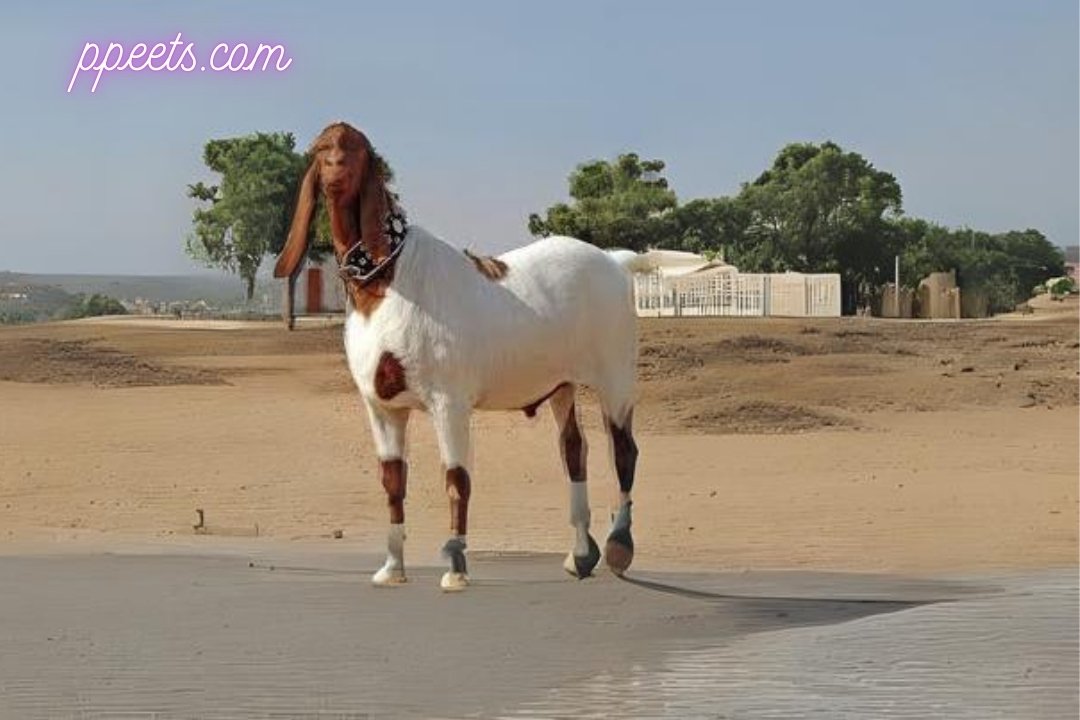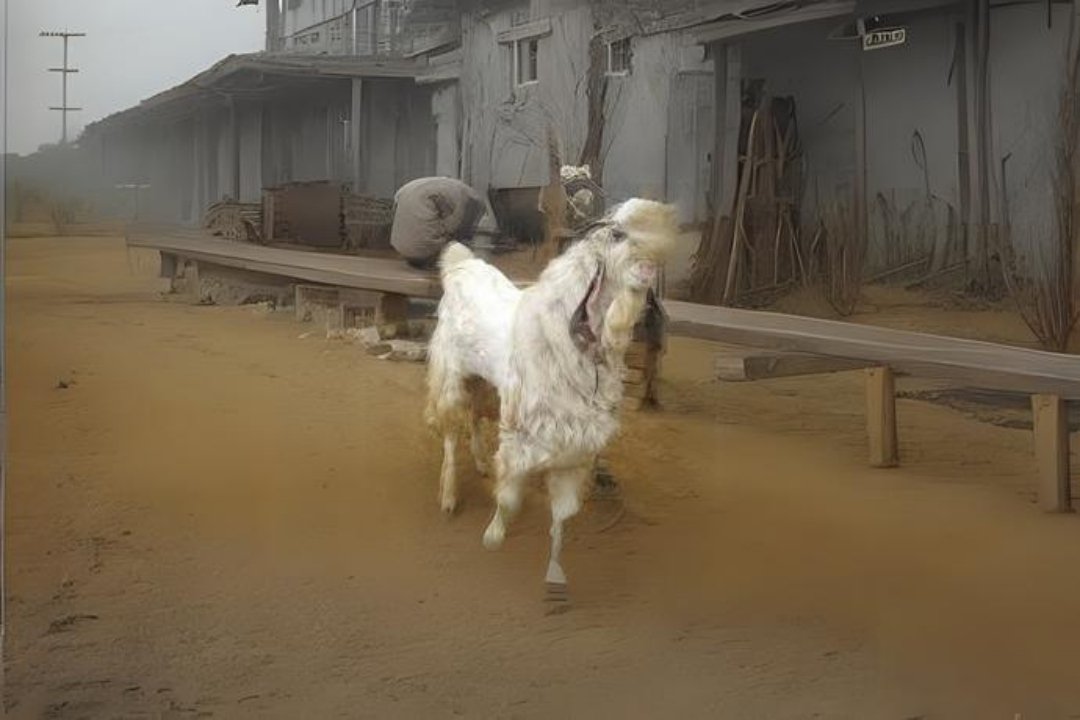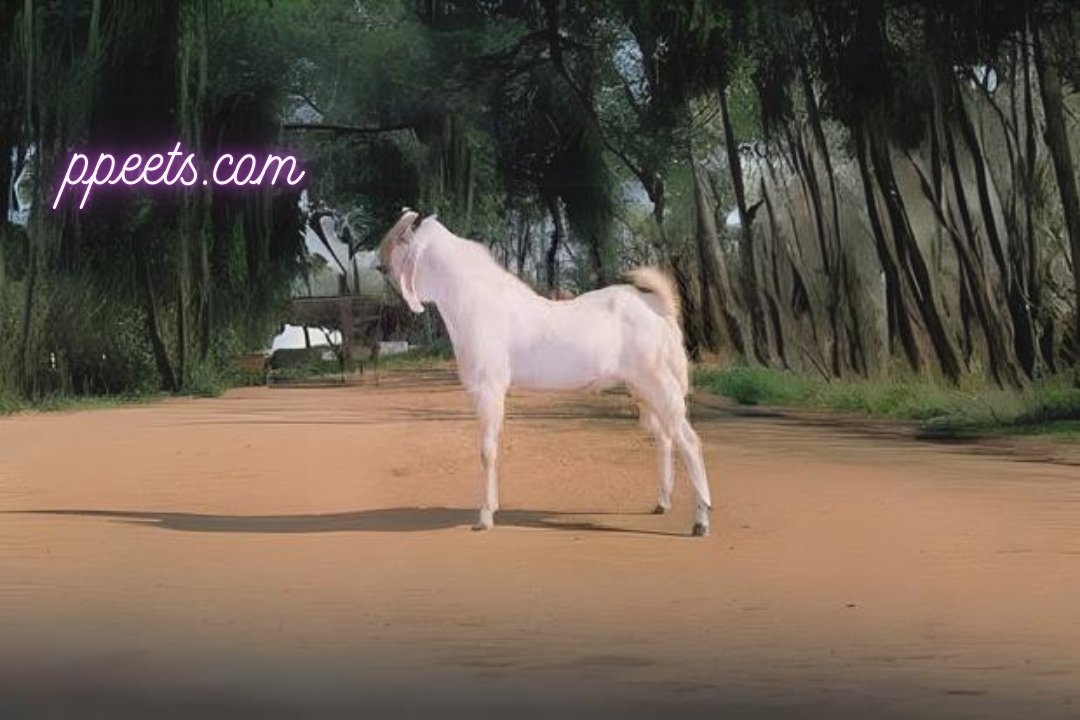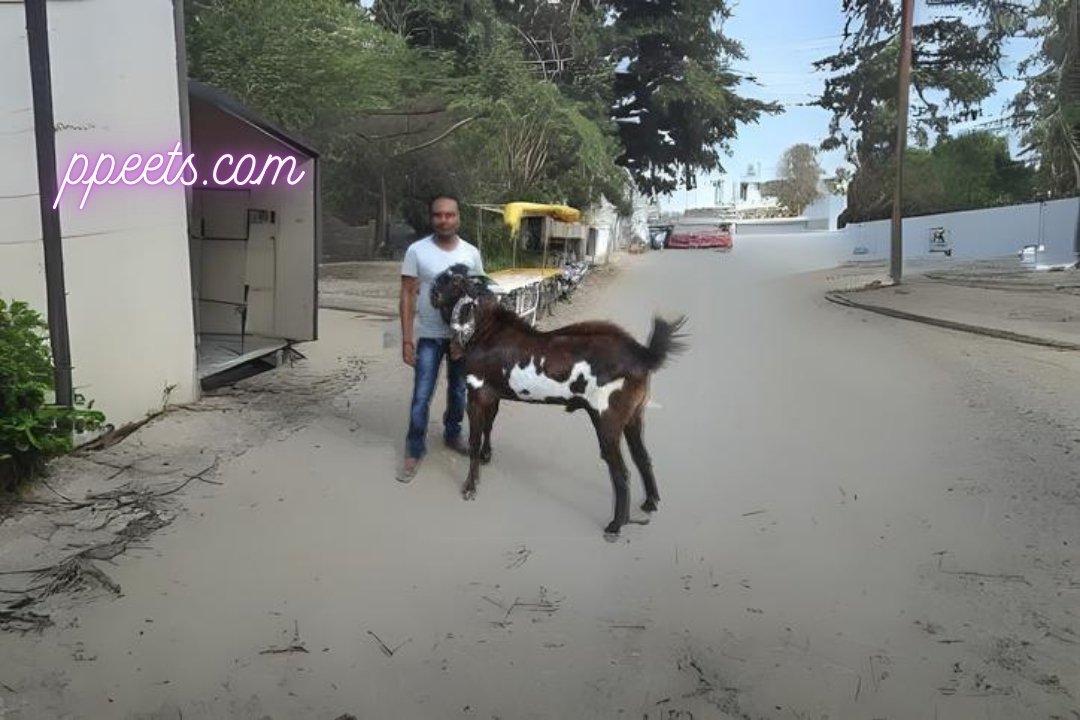Introduction to Jamnapari Goat
The Jamnapari goat, otherwise called Jamunapari, is an eminent variety starting from India.
Known for its unmistakable appearance, high milk creation, and flexibility, the Jamnapari goat has acquired fame both locally and universally for its financial worth and social importance.

History and Origin
The Jamnapari goat follows its starting points to the Jamna Waterway valley in Uttar Pradesh, India, from where it determines its name. Authentic records propose that the variety’s improvement started during the Mughal time frame, where nearby Indian goats were crossbred with intriguing varieties imported from Persia and Focal Asia. This particular rearing meant to upgrade the variety’s size, milk creation, and in general compliance, bringing about the unmistakable qualities seen in Jamnapari goats today.
Jamnapari goats are portrayed by their enormous size, long legs, and articulated Roman nose. They have a straight back, wide chest, and very much built body, mirroring their hearty constitution and perseverance. Their jacket is ordinarily short and lustrous, with colors going from white to light brown. The two guys (bucks) and females (does) may have amazing, bent horns that add to their overwhelming appearance.
Known for their quiet demeanor and flexibility, Jamnapari goats are appropriate to different climatic circumstances and the executives frameworks. They are for the most part mild and simple to deal with, making them well known among ranchers and reproducers. Their amiable nature permits them to flourish in crowd conditions and cooperate emphatically with people, adding to their job as both creation creatures and friends.
Uses and Economic Significance
Jamnapari goats are principally esteemed for their high milk creation and quality. They are famous for creating rich, smooth milk with high butterfat content, making it ideal for cheddar, yogurt, and other dairy items. Furthermore, Jamnapari goats are utilized for meat creation, as their meat is viewed as delicate and tasty, especially in conventional Indian cooking. Their stow away is additionally used in calfskin creation, mirroring their monetary flexibility inside the animals business.
Rearing projects for Jamnapari goats center around keeping up with and further developing variety principles while safeguarding hereditary variety. Particular rearing expects to improve positive characteristics, for example, milk yield, meat quality, and by and large compliance. Family examination and hereditary testing are utilized to guarantee the wellbeing and force of posterity, adding to the maintainability and hereditary uprightness of the variety over ages.
Compelling administration rehearses are essential for the wellbeing and efficiency of Jamnapari goats. They expect admittance to clean water, nutritious feed, and sufficient sanctuary to flourish in fluctuating climatic circumstances. Ordinary veterinary consideration, inoculation conventions, and parasite control estimates assist with forestalling infections and guarantee ideal crowd wellbeing. Appropriate fencing and lodging offices are likewise fundamental for their security and prosperity, especially in locales inclined to hunters or unfavorable weather patterns.
Cultural and Heritage Value
The Jamnapari goat holds huge social and representative significance in India, where it is perceived for its commitments to country jobs and customary farming practices. It is much of the time highlighted in neighborhood fables, celebrations, and strict functions, representing ripeness, flourishing, and horticultural overflow. The variety’s relationship with country ways of life and manageable cultivating highlights its job in saving social legacy and advancing local area strength.
Regardless of its authentic and financial importance, the Jamnapari goat faces difficulties like hereditary disintegration, infection episodes, and natural tensions. Protection endeavors by breed affiliations, administrative offices, and examination establishments plan to save the variety’s extraordinary hereditary legacy and advance reasonable reproducing rehearses. Drives incorporate hereditary preservation programs, instructive effort, and rearing organizations to shield the Jamnapari goat for people in the future.

Future Prospects and Innovation
Looking forward, headways in hereditary qualities, nourishment, and maintainable cultivating practices will impact the fate of Jamnapari goat cultivating. Advancements in regenerative advancements, sickness the executives, and natural stewardship will improve efficiency, government assistance, and versatility inside the variety. Proceeded with joint effort among partners, including ranchers, analysts, and policymakers, will uphold the practical turn of events and worldwide acknowledgment of the Jamnapari goat breed.
All in all, the Jamnapari goat remains as a demonstration of versatility, flexibility, and social legacy in India and then some. Whether for milk, meat, or cowhide creation, this breed keeps on assuming an essential part in local horticulture, provincial economies, and social customs. Grasping its set of experiences, qualities, and importance improves our appreciation for the Jamnapari goat’s persevering through inheritance and its possible commitments to supportable domesticated animals cultivating around the world.
By developing these points with explicit models, contextual investigations, and master bits of knowledge, you can make an extensive and drawing in article about the Jamnapari goat. Tailor the substance to your crowd’s advantages and information level, guaranteeing your article fills in as a significant asset for the two devotees and those new to the variety.
Unquestionably! We should additionally develop the data about Jamnapari goats to make a more exhaustive article:
Genetic Characteristics and Breed Standards
Jamnapari goats are valued for their unmistakable hereditary characteristics that add to their efficiency and reasonableness for different rural purposes. Breed norms underline a few key qualities:
Milk Creation Jamnapari goats are prestigious for their high milk yield, which can go from 2 to 4 liters each day during top lactation. The milk is wealthy in butterfat and protein, making it important for creating cheddar, yogurt, and other dairy items.
Conformity They have a huge, solid casing with a straight back, expansive chest, and advanced udder. Their hearty build upholds their capacity to flourish in assorted climatic circumstances and the board frameworks.
Horns and Actual Appearance The two bucks and displays noteworthy, contorted horns that add to their glorious appearance. Their jacket is normally short, lustrous, and may change in variety from white to light brown, giving regular security against ecological components.
Adaptability to Various Environments
Jamnapari goats are exceptionally versatile to various climatic circumstances, especially in tropical and subtropical locales. They are regularly tracked down in pieces of India, Pakistan, and Bangladesh, where they flourish in bone-dry and semi-dry conditions. Their flexibility makes them appropriate for broad brushing frameworks as well as concentrated cultivating rehearses with legitimate sustenance and the board.
Legitimate sustenance is fundamental for keeping up with the wellbeing and efficiency of Jamnapari goats. They require a decent eating regimen comprising of value feed, grains, minerals, and new water. During lactation and incubation periods, their nourishing necessities increment to help milk creation and fetal turn of events. Supplemental taking care of with concentrates and nutrients might be essential, particularly in areas with restricted brushing valuable open doors or during times of wholesome pressure.

Reproduction and Breeding Management
Rearing projects for Jamnapari goats center around augmenting hereditary potential while guaranteeing the wellbeing and richness of reproducing stock. Reproducing ordinarily happens one time each year, with does arriving at sexual development at around 6 to a year old enough. Controlled mating and rearing cycles assist with keeping up with ideal group the board rehearses and hereditary variety inside the variety. Pregnancy checking, veterinary consideration, and appropriate lodging offices are fundamental for effective propagation and the wellbeing of posterity.
Jamnapari goats assume a critical part in provincial economies through milk creation, meat deals, and worth added items. Their milk is utilized to deliver different dairy items that are famous in nearby business sectors and enterprises. Also, their meat is profoundly pursued for its delicacy and flavor, taking care of homegrown utilization and product markets. The variety’s flexibility in creating milk, meat, and conceal upholds reasonable occupations for ranchers and adds to financial strength in farming networks.
Conservation Efforts and Genetic Preservation
Protection drives are basic for defending the hereditary variety and legacy of Jamnapari goats. Cooperative endeavors among breed affiliations, legislative organizations, and research foundations advance reasonable rearing practices, hereditary preservation programs, and instructive effort. These drives intend to safeguard the variety’s special hereditary characteristics, upgrade flexibility to natural difficulties, and guarantee the drawn out feasibility of Jamnapari goat populaces for people in the future.
Jamnapari goats hold critical social significance in South Asia, especially in India, where they are loved for their commitments to rustic ways of life and horticultural practices. They are highlighted in strict celebrations, services, and far-reaching developments, representing thriving, fruitfulness, and agrarian overflow. Their relationship with customary cultivating rehearses highlights their part in safeguarding social legacy and advancing reasonable farming practices across assorted social settings.
Challenges and Future Prospects
Regardless of their strength and financial worth, Jamnapari goats face difficulties like illness episodes, ecological debasement, and hereditary disintegration. Future possibilities for the variety rely upon headways in veterinary medication, maintainable cultivating rehearses, and hereditary examination. Advancements in regenerative innovations, illness the executives, and dietary science will upgrade efficiency, government assistance, and hereditary variety inside Jamnapari goat populaces. Proceeded with coordinated effort among partners, including ranchers, specialists, and policymakers, will be significant for tending to these difficulties and guaranteeing the maintainable advancement of Jamnapari goat cultivating around the world.

Conclusion
All in all, the Jamnapari goat embodies versatility, efficiency, and social legacy in agrarian networks across South Asia. Whether for milk creation, meat quality, or social importance, this breed keeps on assuming a crucial part in country economies and supportable farming practices. Figuring out their hereditary qualities, nourishing necessities, and social importance advances our appreciation for the Jamnapari goat’s getting through inheritance and its possible commitments to worldwide animals cultivating.
By developing these subjects with explicit models, contextual investigations, and master experiences, you can make an exhaustive and drawing in article about Jamnapari goats. Tailor the substance to your crowd’s advantages and information level, guaranteeing your article fills in as an important asset for the two devotees and those new to the variety.

